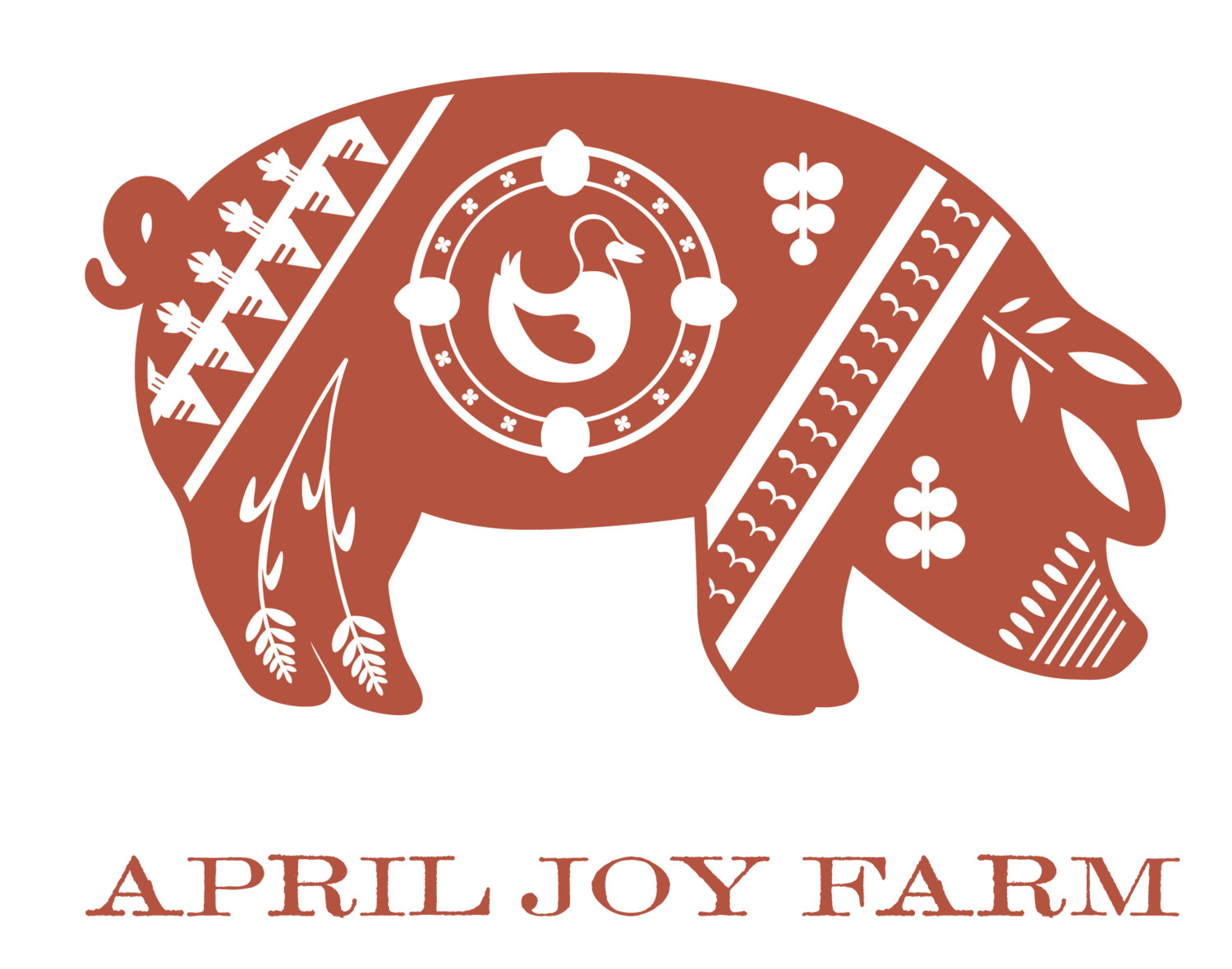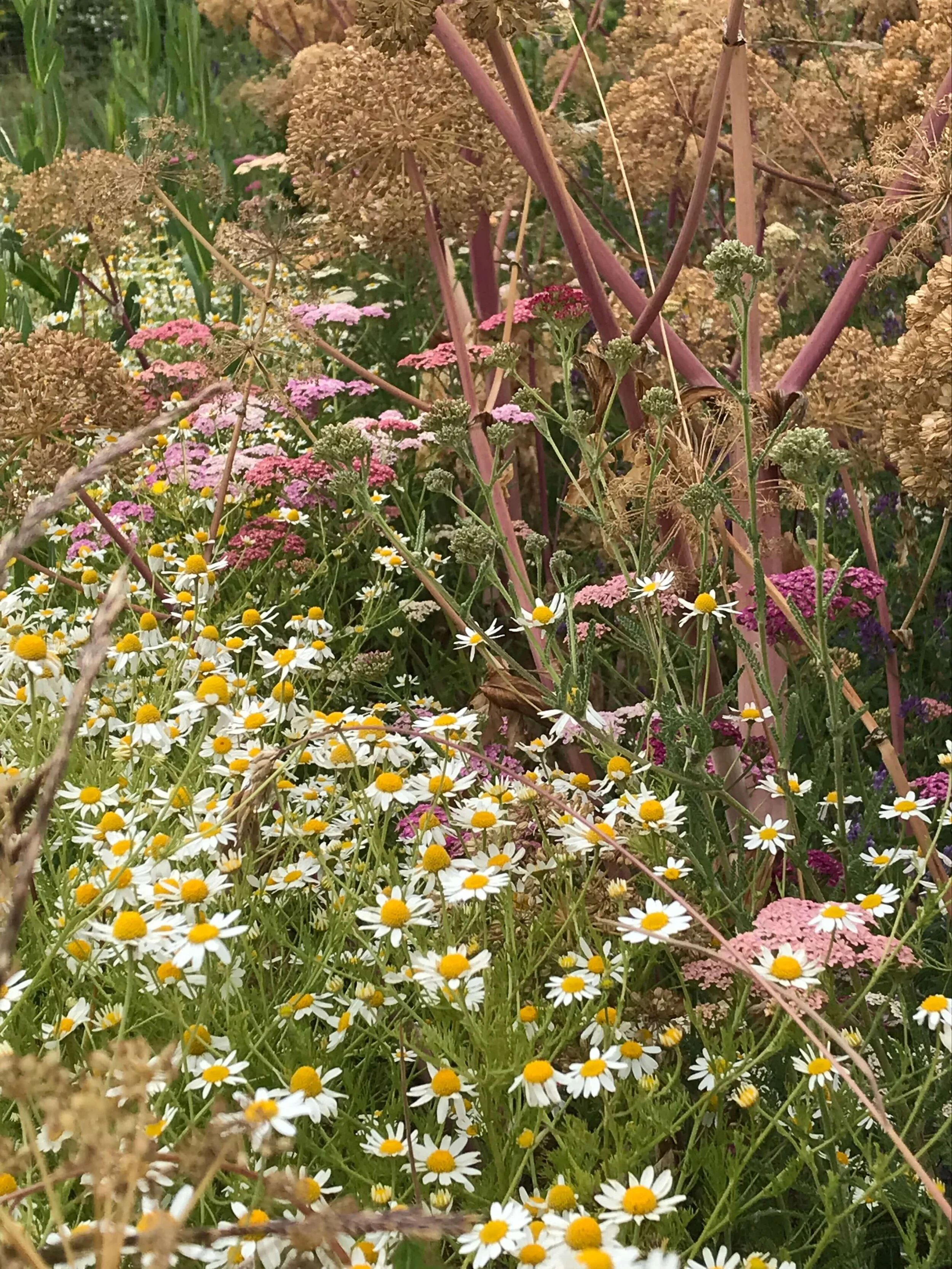How Big Is April Joy Farm | Part II
Read Part I of this essay here.
On Monday, I was training up lanky tomato vines when suddenly I knew today was a very important day. The incessant, chittering bird calls of which I’d grown so familiar were no longer coming singularly from the kestrel box, but rather from the shed roof of the big barn, and then from the top of the great old Gravenstein apple tree. I walked softly and slowly toward the nest box. Soon, I watched two fluffy, fledgling kestrels test their wings and land very wobbly, one after the other on the roof of the bird box. I was so close I could see their downy chest feathers blowing in the breeze, and my heart was as puffed up as their little chests.
In that moment I felt so exuberant! The fact that these two little ones had a big, sheltered, diverse farm on which to learn to fly and hunt, and that I had helped make this possible, well, it filled me right up to the very tip top with joy!
How big is my farm? Big enough to provide fence posts and fir trees, apple branches and tin roofs for the use and pleasure of wild creatures great and small. With a big grin on my face, I had just about turned to head back to my work when surprisingly, a THIRD young bird beak appeared from inside the nest box. It was if this little one’s siblings had come back to provide some encouragement. The two on the roof started chittering again, and I laughed, imagined they were saying, “Come ON! Just come outside and fly! It’s kind of REALLY FUN!”
**
Olivia Smith is a graduate student at WSU’s School of Biological Sciences. She has been conducting bird surveys at our farm for the last four years as part of a project to better understand the dynamics between wild birds, biodiversity and agricultural lands.
The first bird survey Olivia did at our farm was in June 2016 and she identified 24 bird species. One year later, the count was 25. In 2018, my record of her June trip indicates a total of 29 species. This year, on a visit just two weeks ago, she identified over 37 bird species in less than an hour, including Wilson’s Warbler, Golden-crowned Kinglet, Pacific-slope Flycatcher, Townsend’s Warbler, Orange-crowned Warbler and surprisingly a Nashville Warbler with a nest of young in the Scotch pine tree right at the edge of the farmhouse porch. Minutes after Olivia left, I heard the uplifting, hopeful song of a Swainson's Thrush- which would mean at the very least 38 distinct species of wild birds are now part of our farm ecosystem.
In her book, In Search of the Canary Tree, scientist Lauren E. Oakes describes how changing her language has changed her perspective. Whenever she saw the term natural resources, she began to replace it with the phrase natural relationships. The term natural resources implies that the value is rooted in the processes of separation, disconnection, or extraction for human gain. Natural relationships by contrast, more realistically describes the complexity and benefits inherent in honoring the existing connections, especially those we cannot see and/or do not understand.
Natural relationships? Yes! Relationships are exactly why I am so passionate about working year after year to restore and support my entire farm ecosystem- especially those places beyond the end of the crop rows. I have no idea how the willows in the low swale or the wild hazelnuts at the canyon edge contribute to healthy produce. But like any good relationship, you act on faith and out of love, often without knowing why or how it might benefit you. You care for the other, because more than any solo, you value the symphony.
I am quite proud of the beautiful produce that rolls out of our crop field and into your kitchens. But I want you all to understand that it is in large part the complex, diverse, un-mowed, unmanaged wildness surrounding the cultivated land that makes your food possible. And that is why I am equally proud that our wild bird populations keep increasing. It means I’m on the right track, because to work miracles, nature needs time and space. My job as land steward is to support the natural processes of all areas of my farm and that means encouraging and nurturing biodiverse sanctuaries to take root in every place I can.
The entire parcel of land under our care is 23.99 acres. And in total, only 2 ½ acres is devoted to growing food for our human community. And of that 2 ½ acre produce field, only 50% is cultivated in any given year to grow market crops. The remaining acreage is devoted to pollinator habitat (13%) and a cocktail blend of grains, legumes and non-vegetable plants (37%) that feed the diverse soil microorganisms we depend on to build healthy soil.
I’m sure you’ve seen those books and back-to-the-land article headlines, “Grow 1 ton of food on a postage stamp lot!” This reductionist (resource-based) view might likewise incorrectly claim I only need 1 ¼ acres to grow 12 tons of vegetables. But I firmly believe the root of many pest and disease issues is a lack of enriched, functionally diverse land. The systems (relationship-based) view is that it takes a village--or rather a vibrant, biodiverse landscape-- to grow healthy food. So, from the cattails in the canyon to the Oregon White Oak at the hayfield’s edge-- my definition of farmland will always include every last acre on the deed. -AJ
“To care for the natural world is the most effective insurance policy we can have.”

